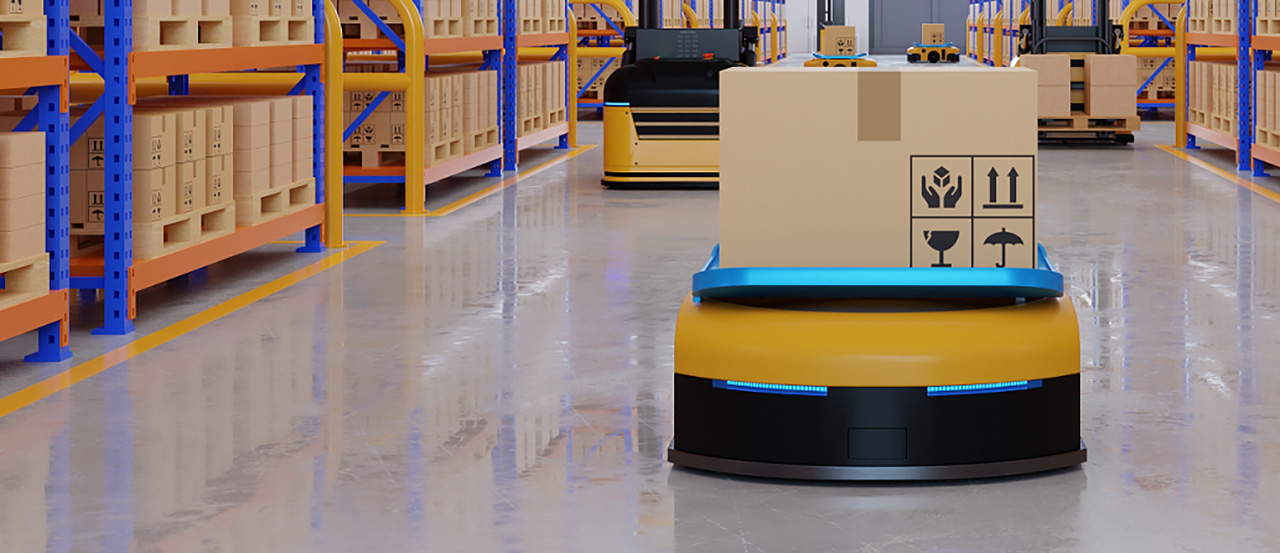INSIGHTS
Automated material moving using automated guided vehicles
An autonomous guided vehicle (AGV) is the optimal solution for any warehouse automation process. With a suitable design a non-fixed-track free-navigation AGV that is continuously scanning its environment and planning alternative routes when identifying obstacles, can be perfectly used both outdoors and on a fixed track to serve routine or repetitive transport tasks.With free-navigation self-driving vehicles, the material handling time required for each stage of production from request to execution can be measured, planned and quantified. In this way, automations can be defined in ERP/MES systems that follow material flow processes online, which are independent of human intervention, while ensuring continuity. In addition to the safe mode of operation, the possibility of redeploying the workforce opens up in the warehouses, which makes resource planning even more efficient.
Manufacturing execution systems (MES) and enterprise resource planning (ERP) both bring a higher level of control to the life of manufacturing companies by making it possible to follow production and other processes in real time. However, there is an even higher level of operational optimization: the self-driving vehicle (AGV) embodies the highest level of automated material handling.

AGVs can be used in any warehouse automation. With a relatively fixed shop-floor layout, they are just as suitable for supporting well-established, well-planned or standard processes as they are for servicing constantly repeating routine delivery tasks. Whether it is raw materials or semi-finished products, autonomous guided vehicles achieve a more optimal result than the widely used milkrun solutions: in this case, instead of real current needs, the supply of variable amounts of materials is tied to specific times.
The non-fixed-track free-navigation self-driving vehicle basically follows the established route. But since it continuously scans its environment, when identifying obstacles it promptly redesigns the alternative routes and proceeds on the shortest one, thus minimizing unnecessarily driven meters and idle journeys. With appropriate design it can be used both outdoors and on a fixed track and enables full automation under such conditions, too.In addition to providing coordinated service to production-related processes, with the AGV maintenance also becomes better planned, which results in lower maintenance costs.
In this way, automations can be defined in ERP/MES systems that follow material flow processes online, which are independent of human intervention, while ensuring continuity. In addition to the safe mode of operation, the possibility of redeploying the workforce opens up in the warehouses, which makes resource planning even more efficient.
Wide use is also enhanced by the modular design. Thanks to the integrity of the different AGV components, this enables quick troubleshooting and possible cost reduction, for example by minimizing the required spare parts. A module is available that automatically connects and disconnects external gauges, an optional additional reverse function, and one that accepts hydraulic accessories.